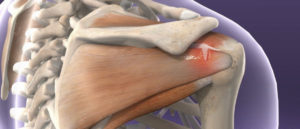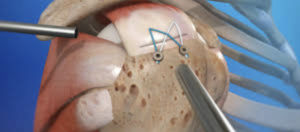CORE Physical Therapy In Omaha Explains…
By Dr. Mark Rathjen PT DPT CSCS
CORE Physical Therapy Co-owner
17660 Wright St. 9/10
Omaha NE
402-933-4027
“Early rehabilitation after arthroscopic cuff repair is associated with some initial improvements in ROM and function. Ultimately, similar clinical and anatomical outcomes between groups existed at 1 year. While there was no significant difference between groups in anatomic failure of the repaired cuff, there may be a trend towards increased re-tear with larger tears.”
What does this mean?
Starting early rehab is beneficial, but not vital to long term efficacy. Though I would agree for an athletic population, it would be even more valuable to start early, and decrease adaptations and other compensations. The athlete being much more complicated than an average person, earlier the better as long as the protocol cols and milestones are not ignored.
So I should start PT early?
Yes, Earlier the better, unless there is a very complicated multi instability repair.
Whats the moral of the story?
Start early, recovery will take 6-12 months depending on how involved and what level you are returning back to.
CORE Physical Therapy and Sports Performance PC specializes in athletes populations in Omaha. We work with all types of athletes and shoulder rehabilitations. We work with all levels and all athletes from high school, to professional athletes.
This is who we are, this is what we do…
At CORE Physical Therapy in Omaha, We specialize in the treatment of athletes. We have worked with athletes for a combined 30 years. CORE was established in 2015 by Dr. Mark and Dr. Claire Rathjen is family owned and operated.
Proud winners of the Omaha Choice awards for 2016, 2017, 2018, 2019, 2020,2021
We are proud to serve the greater Omaha metro area.
For More information, Please feel free to contact us http://coreomaha.com/contact/
Please feel free to follow us at https://www.facebook.com/COREomaha/
To get started http://coreomaha.com/getting-started/
For more Blog information http://coreomaha.com/blog/
Youtube Account linked below.
https://www.youtube.com/channel/UCVg8OSN5h-i1n_ykw1Gvahg?view_as=subscriber
Early versus delayed rehabilitation following arthroscopic rotator cuff repair: A systematic review
- PMID: 25797067
- DOI: 10.1080/00913847.2015.1025683
Abstract
Background: Early passive range of motion (ROM) following arthroscopic cuff repair is thought to decrease postoperative stiffness and improve functionality. However, early aggressive rehabilitation may compromise repair integrity. Our purpose was to perform a systematic review to determine if there are differences between early and delayed rehabilitation after arthroscopic rotator cuff repair in terms of clinical outcomes and healing.
Methods: We performed a literature search with the terms ‘arthroscopic rotator cuff’, ‘immobilization’, ‘early’, ‘delayed’, ‘late’, and ‘rehabilitation’ using PubMed, Cochrane Central Register of Controlled Trials, and EMBASE. Selection criteria included: level I/II evidence ≤ 6 months in duration, comparing early versus delayed rehabilitation following arthroscopic repair. Data regarding demographics, sample sizes, duration, cuff pathology, surgery, rehabilitation, functional outcomes, pain, ROM and anatomic assessment of healing were analyzed. PRIMSA criteria were followed.
Results: We identified six articles matching our criteria. Three reported significantly increased functional scores within the first 3-6 months with early rehabilitation compared to the delayed group, only one of which continued to observe a difference at a final follow-up of 15 months. Four articles showed improved ROM in the first 3-6 months post-operatively with early rehabilitation. One noted transient differences in pain scores. Only one study noted significant differences in ROM at final follow-up. No study reported any significant difference in rates of rotator cuff re-tear. However, two studies noted a trend towards increased re-tear with early rehabilitation that did not reach significance. This was more pronounced in studies including medium-large tears.
Conclusions: Early rehabilitation after arthroscopic cuff repair is associated with some initial improvements in ROM and function. Ultimately, similar clinical and anatomical outcomes between groups existed at 1 year. While there was no significant difference between groups in anatomic failure of the repaired cuff, there may be a trend towards increased re-tear with larger tears.
Keywords: Rehabilitation; rotator cuff; shoulder; surgery.
Similar articles
-
Am J Sports Med. 2015 May;43(5):1265-73. doi: 10.1177/0363546514544698. Epub 2014 Aug 20.PMID: 25143489
-
Arthroscopy. 2012 Jan;28(1):34-42. doi: 10.1016/j.arthro.2011.07.012. Epub 2011 Oct 20.PMID: 22014477 Clinical Trial.
-
Outcomes of single-row and double-row arthroscopic rotator cuff repair: a systematic review.
J Bone Joint Surg Am. 2010 Mar;92(3):732-42. doi: 10.2106/JBJS.I.01295.PMID: 20194334 Review. -
Arch Orthop Trauma Surg. 2014 Sep;134(9):1279-85. doi: 10.1007/s00402-014-2028-2. Epub 2014 Jun 11.PMID: 25027677 Review.
-
Arthroscopy. 2015 Feb;31(2):197-204. doi: 10.1016/j.arthro.2014.08.014. Epub 2014 Oct 11.PMID: 25306517 Clinical Trial.


